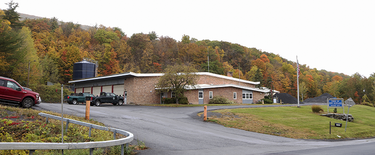New Scotland town workers look to unionize
NEW SCOTLAND — A group of New Scotland employees have signed a letter asking the town to voluntarily recognize their right to unionize.
Supervisor Douglas LaGrange told The Enterprise on Aug. 3 that he’d received a letter on Civil Service Employees Association letterhead stating employees in five departments were seeking to be represented by the public-sector union.
The July 25 dated letter, which The Enterprise obtained through a Freedom of Information Law request, is signed by three highway-department employees and asks the town to voluntarily recognize the union, but one of the signatories claims the letter represents the view of 90 percent of eligible employees.
On Aug. 7, highway worker Ben Kawczak told The Enterprise about 15 workers in the town’s highway, water and sewer, mechanic, transfer station, and parks departments are eligible to join CSEA Local 1000, and that about 90 percent are on board with the idea.
Kawczak said he, Christian Tomlin, and Connor Weightman have spearheaded the union drive. All three, whom the town has hired in the past three years, are under the age of 30.
The town is being asked to “voluntarily recognize and negotiate with the union [CSEA] of the employees’ choice,” according to the letter sent to LaGrange.
As for what motivated the unionization push, Kawczak said there wasn’t any specific issue or concern; workers “just want to make sure going forward we have a fair contract that guarantees benefits and pay and everything else.”
The way things work now, Kawczak said, all pay and benefits are set by the town board. And what workers looking to organize want is to be able to have input if any issues arise or something else were to happen, “then we can come back to and say, ‘Hey, look, we’re all in this together.’”
LaGrange said, at this early stage, the town “just want[s] what’s best for our employees,” whether that be union representation or a continuation of the current process.
No town board member is against unions, LaGrange said, “by any stretch of the imagination,” but the board also wants to ensure its employees “are treated” correctly and are “fully informed.”
While the board discussion was part of an executive session, “so I really don’t want to go into specifics,” LaGrange said the board “did emphasize that it’s important that we take care of the employees, as we’ve done for the past few years.”
But, he added, “We also have to consider our taxpayers and residents, too. Many of the employees, if not most of them, are residents.”
Getting so many other workers to come around to the idea of joining a union wasn’t too heavy a lift because, Kawczak said, “We were kind of on board with it when we started talking about it.”
As for getting the town board to voluntarily recognize the union, Kawczak said, “We’re hoping they’ll do the right thing and recognize us,” but if not, the workers already have a supermajority ready to vote through the union.
As for a timeline, Kawczak said the town was served with the July 25 dated letter on July 27, and now has 30 days to decide if it will voluntarily recognize the union. And if it doesn’t, then the workers will file a certification petition with the New York State Public Employment Relations Board to set up an election.
As for why he felt it was best for the workers to continue to deal directly with the town rather than have CSEA as their intermediary, LaGrange said that, for the workers who are “very paycheck-oriented,” compared to the salary scale of the county’s unionized workforce, New Scotland workers start out a little slower on the first two levels, but we jump way ahead on the next three levels.”
LaGrange also said New Scotland added two more levels, six and seven, “which is kind of a longevity recognition,” and is something Albany County doesn’t offer workers.
For an Operator #1 — which is Kawczak, Tomlin, and Weightman’s job classification — step pay in New Scotland starts at $18.59 per hour, increasing to $20.12, $21.68, $23.22, $24.77, $25.99 (minimum 7 years), and then $27.21 (minimum 12 years, earliest effective date: January 2024).
An Albany County Operator #1 starts at $21.52 per hour, increasing to $21.92, $22.67, $22.78, $23.15, and finally $25.57 per hour
Asked about LaGrange’s remarks and why it would be better for individual workers to deal directly with the town, Kawczak said he preferred having an intermediary, “I like having someone there that’s a third party.”



